The Pope is the Bishop of Rome and the head of the Catholic Church, considered by Catholics to be the successor of Saint Peter. Historically, the Pope ruled the Papal States and now serves as head of state of Vatican City. The Pope's authority stems from the belief that Jesus granted Saint Peter primacy, giving him the 'Keys of Heaven.' Leo XIV is the current Pope, elected on May 8, 2025.
1929: Lateran Treaty Establishes Vatican City
In 1929, the Lateran Treaty between the Kingdom of Italy and the Holy See established Vatican City as an independent city-state, guaranteeing papal independence from secular rule.
1929: Papal States
Since 1929, the Pope became the head of state of the much smaller Vatican City state.
1932: Lutheran Church–Missouri Synod adopted A Brief Statement of the Doctrinal Position of the Missouri Synod
In 1932, the Lutheran Church–Missouri Synod adopted A Brief Statement of the Doctrinal Position of the Missouri Synod, asserting the Pope as the Antichrist.
1950: Pope Pius XII Defines the Assumption of Mary as Dogma
In 1950, Pope Pius XII defined the Assumption of Mary as dogma. This was the only time a pope has spoken ex cathedra since papal infallibility was explicitly declared.
1959: John XXIII announces Second Vatican Council
In 1959, Pope John XXIII announced his intention to establish the Second Vatican Council.
1959: Wisconsin Evangelical Lutheran Synod released its Statement on the Antichrist
In 1959, the Wisconsin Evangelical Lutheran Synod (WELS) released its own statement, the "Statement on the Antichrist", declaring the Papacy to be the Antichrist.
1964: Dogmatic Constitution on the Church
In 1964, the Second Vatican Council declared the Dogmatic Constitution on the Church.
1973: Catholic–Lutheran dialogue
In 1973, the United States Conference of Catholic Bishops' Committee on Ecumenical and Interreligious Affairs and the USA National Committee of the Lutheran World Federation included a passage on papal primacy in a larger statement on Catholic–Lutheran dialogue.
1976: United States' Foreign Sovereign Immunities Act of 1976
In 1976, the United States' Foreign Sovereign Immunities Act was enacted, outlining exceptions to the immunity of foreign governments in American courts, including commercial activity.
1978: Election of John Paul II
Prior to the election of the Polish-born John Paul II in 1978, those elected to the papacy were predominantly Italians. He was the first non-Italian pope since 1522.
1978: End of Papal Coronation Tradition
Until 1978, the pope's election was followed by the papal coronation, a procession from the Sistine Chapel to St. Peter's Basilica, concluding with the crowning of the new pope with the triregnum (papal tiara) and the Urbi et Orbi blessing.
1983: 1983 Code of Canon Law
The 1983 Code of Canon Law stated that if the Roman Pontiff resigns his office, it is required for validity that the resignation is made freely and properly manifested but not that it is accepted by anyone.
1996: Universi Dominici Gregis
In 1996, Pope John Paul II promulgated Universi Dominici Gregis, which outlined the regulations regarding a papal interregnum.
1996: Promulgation of Universi Dominici Gregis
In 1996, Universi Dominici Gregis allowed a simple majority after a deadlock of twelve days.
2005: 2005 Conclave Vice Dean
During the 2005 conclave, the vice dean performed the task of asking the two solemn questions of the man who has been elected.
2005: Papal Conclave Uses Special Urn
For the 2005 papal conclave, a special urn was used instead of a chalice and plate. This measure made it difficult for electors to insert multiple ballots.
2005: Inclusion of Title
From 1863 to 2005, the Annuario Pontificio also included the title "patriarch of the West".
2005: Benedict XVI's Coat of Arms
In 2005, Pope Benedict XVI omitted the papal tiara from his personal coat of arms, replacing it with a mitre.
2005: Church Bells Rung to Signal Election
Starting with the papal conclave of 2005, church bells are rung as a signal that a new pope has been chosen, in addition to the white smoke.
March 2006: Vatican Statement on "Patriarch of the West"
On 22 March 2006, the Vatican released a statement explaining the omission of the title "patriarch of the West" from the Annuario Pontificio.
October 2007: Ravenna Document
On 13 October 2007, the Ravenna Document was created by theologians chosen by the Catholic and the Eastern Orthodox Churches.
2007: Revocation of Simple Majority Rule
In 2007, Pope Benedict XVI revoked the simple majority rule (after a deadlock of twelve days) by motu proprio.
November 2008: US Court of Appeals on Catholic sex abuse case
In November 2008, the United States Court of Appeals in Cincinnati ruled that a case regarding sexual abuse by Catholic priests could proceed if the plaintiffs could prove that the bishops were acting as employees or agents of the Holy See and following official policy.
April 2010: Proposed plan to arrest Pope Benedict XVI in the UK
In April 2010, there was press coverage in Britain concerning a proposed plan by atheist campaigners and a barrister to have Pope Benedict XVI arrested and prosecuted in the UK for alleged offences regarding Catholic sex abuse cases.
October 2012: Declaration on Vatican II Implementation
On 11 October 2012, 60 theologians issued a declaration stating that the intention of Vatican II to balance authority in the Church has not been realized.
February 2013: Benedict XVI Vacated the Holy See
On 28 February 2013, Benedict XVI vacated the Holy See. This was the first papal resignation since 1415.
June 2013: Encyclical Dated 29 June 2013
In June 2013, Pope Francis signed an encyclical with his name alone ("Franciscus") in Latin.
2013: Francis's Coat of Arms
In 2013, Pope Francis maintained the mitre that replaced the tiara but omitted the pallium from his personal coat of arms.
2015: Francis played a role in brokering the 2015 improvement in relations between the United States and Cuba.
In 2015, Pope Francis played a significant role in brokering improved relations between the United States and Cuba, demonstrating the Pope's influence in international diplomacy.
2017: Angelo De Donatis
From 2017 until 2024, Angelo De Donatis served as the cardinal vicar.
2022: Likely first trial in English courts
In 2022, the first trial to take place in the English courts is likely to occur, regarding commercial transactions involving governmental units of the Holy See.
2023: Likely first trial in English courts
In 2023, the first trial to take place in the English courts is likely to occur, regarding commercial transactions involving governmental units of the Holy See.
2024: Baldassare Reina
In 2024, Baldassare Reina became the new cardinal vicar.
2024: "Patriarch of the West" Reintroduced
In 2024, the title "Patriarch of the West" was reintroduced to the pope's list of titles in the Annuario Pontifico.
May 2025: Election of Pope Leo XIV
In May 2025, Leo XIV was elected as the new Pope on the second day of the 2025 papal conclave, becoming the current Pope.
Mentioned in this timeline
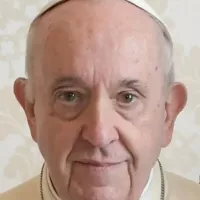
Pope Francis served as the head of the Catholic Church...
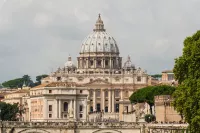
The Catholic Church the largest Christian church globally with over...
Italy officially the Italian Republic is located in Southern and...
Cuba is an island country in the Caribbean consisting of...
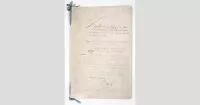
A constitution serves as the foundational legal document for any...
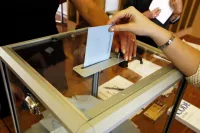
An election is a structured decision-making process where a population...
Trending
3 days ago Mario and Courtney Lopez celebrate 13 years of marriage with loving tributes.

7 months ago Trump's DC prosecutor pick faces opposition after Nazi sympathizer praise apology.

7 months ago Adesanya Seeks Redemption: Eyes Strickland Rematch After Shocking UFC Title Loss.

9 months ago March Madness 2025: Brackets, Predictions, and Updates on Men's and Women's Tournaments

30 days ago Kendall Jenner Celebrates Her 30th Birthday with Nude Beach Photos and Bikini Looks
1 month ago Cruz Azul vs. Monterrey Liga MX Match: Live Stream, Score, Prediction and Odds
Popular
Matt and Ross Duffer known as the Duffer Brothers are...
Aftyn Alyssa Behn is an American politician currently serving as...

XXXTentacion born Jahseh Dwayne Ricardo Onfroy was a controversial yet...

Candace Owens is an American conservative political commentator and author...

Ilhan Omar is an American politician currently serving as the...
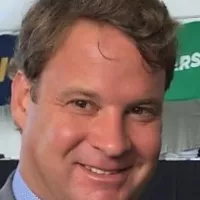
Lane Kiffin is an American football coach currently serving as...
